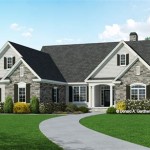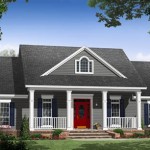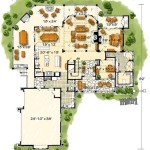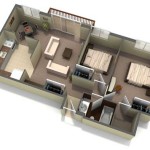Cullen House Floor Plan: An Architectural Deep Dive
The Cullen House, designed by prominent architect Philip Johnson, stands as a significant example of mid-century modern architecture. While often overshadowed by its larger, more publicly accessible counterpart, the Menil Collection, the Cullen House offers a unique glimpse into Johnson's approach to residential design and his adaptation of modernist principles for private living.
Understanding the Cullen House floor plan requires acknowledging its context within the broader architectural landscape of the time. The mid-20th century witnessed a shift towards open-plan living, minimalist aesthetics, and the integration of indoor and outdoor spaces. Johnson embraced these concepts, crafting a residence that prioritized functionality, flow, and a harmonious relationship with the surrounding environment.
One of the defining features of the Cullen House floor plan is its pavilion-like structure. Rather than conforming to a traditional, monolithic design, the house is composed of a series of interconnected pavilions, each serving a distinct purpose. This modular approach allows for flexibility and creates a sense of spaciousness, despite the relatively modest overall footprint.
The main pavilion houses the primary living areas, including the living room, dining room, and kitchen. These spaces are characterized by open sightlines and a seamless transition between them, fostering a sense of communal living and facilitating interaction. Large expanses of glass blur the boundaries between indoors and out, drawing natural light deep into the interior and providing expansive views of the surrounding landscape.
Privacy is achieved through the strategic placement of the other pavilions. Bedrooms and bathrooms are housed in separate, more secluded wings, offering a retreat from the communal areas. This separation of public and private spaces is a hallmark of Johnson's residential design and contributes to the overall functionality of the Cullen House floor plan.
The use of brick as the primary building material contributes to the house's understated elegance. The warm, earthy tones of the brick complement the natural surroundings and create a sense of groundedness. This material choice also reflects Johnson's appreciation for honest, straightforward architecture, where the structure itself serves as ornamentation.
The landscaping surrounding the Cullen House is an integral part of the overall design. Carefully curated gardens and courtyards enhance the connection between the interior and exterior spaces. These outdoor areas provide additional living space and offer opportunities for contemplation and relaxation, further emphasizing the importance of the natural environment within the design scheme.
A key element of the Cullen House floor plan is its emphasis on natural light. Large windows and skylights throughout the house maximize daylight penetration, reducing the need for artificial lighting and creating a bright, airy atmosphere. This focus on natural light not only contributes to the aesthetic appeal of the interior but also promotes a sense of well-being and connection to the natural world.
The Cullen House floor plan also reflects Johnson's meticulous attention to detail. Built-in furniture, custom cabinetry, and carefully selected materials contribute to the overall sense of refinement and sophistication. These details demonstrate Johnson's commitment to creating a cohesive and harmonious living environment, where every element is carefully considered and integrated into the overall design.
While access to the Cullen House is limited, studying its floor plan offers valuable insights into Johnson's architectural philosophy. The house stands as a testament to his ability to translate modernist principles into a comfortable and functional living space. Its emphasis on open planning, natural light, and the integration of indoor and outdoor spaces continues to inspire contemporary residential design.
The careful zoning of public and private areas within the Cullen House floor plan demonstrates a thoughtful approach to family living. The interconnected yet distinct pavilions cater to both communal interaction and individual privacy, creating a dynamic and adaptable living environment. This nuanced approach to spatial organization remains relevant in today's architectural landscape.
Examining the Cullen House floor plan also reveals Johnson's masterful handling of scale and proportion. Despite its modest size compared to some of his other projects, the house feels spacious and grand, thanks to its open plan and soaring ceilings. This skillful manipulation of space contributes to the overall sense of elegance and refinement.
The Cullen House floor plan serves as a valuable case study for architects and design enthusiasts alike. Its innovative approach to residential design, its integration of modernist principles, and its meticulous attention to detail continue to inspire and influence contemporary architecture. While the house remains a private residence, its legacy as a significant example of mid-century modern architecture endures.

Cullen Layout Twilight House Layouts

M1 Residence Skylab Architecture Tecno Homes House Floor Plans Twilight

Pin By Jim Maltese On Twilight House Floor Plans Architecture

Cullen House 2nd Floor By Aramis Arya On Deviantart

Mod The Sims A Cullen Ish House

Buy Edward Cullen S Twilight House Open Floor Plan 3 Cnnmoney Com

Twilight S Cullen Family Residence Free Design 3d Floor Plans By Planner 5d

Cullen House Series 3rd Floor By Aramis Arya On Deviantart

Mod The Sims Twilight Cullen House

The Sims Resource Hoke House Twilight Cullen








